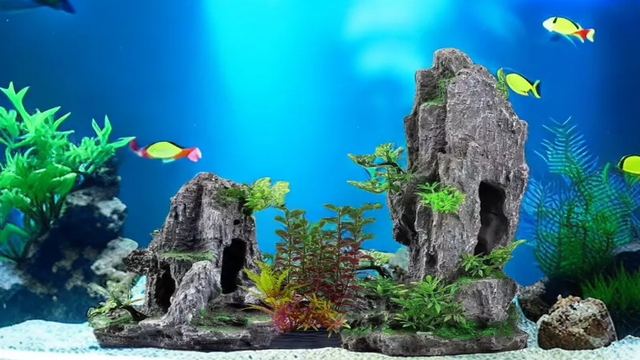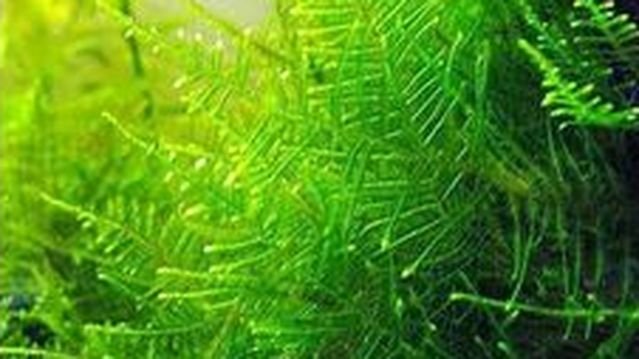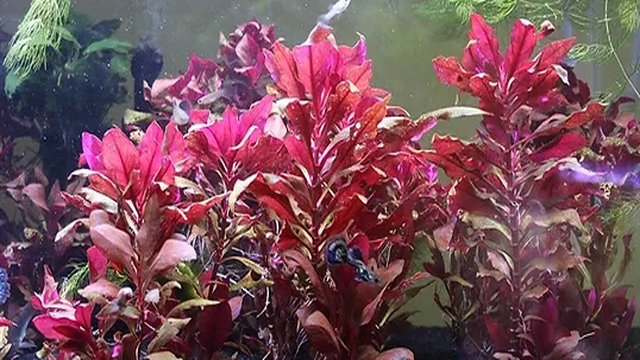How To Quarantine Aquarium Plants
Find Out How to Quarantine Your Aquarium Plants
Did you know that up to 90% of aquarium diseases can be introduced through new plants? To protect your aquatic environment, it’s crucial to quarantine your aquarium plants before adding them to your tank.
In this article, we will guide you through the step-by-step process of setting up a quarantine tank, choosing healthy plants, and monitoring their transition. By following these precise techniques, you can ensure the health and well-being of your aquarium inhabitants.
Key Takeaways
- Quarantining plants is important to prevent the spread of diseases in the aquarium and maintain plant diversity.
- Setting up a separate quarantine tank with its own filtration system, heater, and lighting is crucial.
- Purchasing plants from reputable suppliers and inspecting them for signs of disease before buying is essential.
- Monitoring plants closely for any signs of disease or pests during the quarantine period and taking immediate action if issues arise is necessary.
Importance of Quarantining Plants
To ensure the health and well-being of your aquarium, it’s crucial to quarantine plants before introducing them.
Quarantining plants provides several benefits, the most important being the prevention of the spread of diseases. By isolating new plants from your existing aquarium, you can prevent the introduction of any potential pathogens or parasites that may be present on the new plants. This is especially important because diseases can quickly spread throughout an aquarium, causing harm to the fish and other aquatic organisms.
Quarantining also allows you to assess the quality and suitability of the plants before adding them to your aquarium. By observing the plants in a separate tank, you can determine their overall health and ensure that they’re free from any visible signs of disease or infestation. Additionally, this process provides an opportunity to acclimate the plants to the new environment and adjust them to the parameters of your aquarium.
Moreover, quarantine periods promote plant diversity within your aquarium. Adding new plants without quarantining them can lead to the introduction of invasive species or plants that are incompatible with your existing ecosystem. By carefully selecting and quarantining plants, you can maintain a balanced and diverse aquatic environment.
Setting Up a Quarantine Tank
When setting up a quarantine tank for your aquarium plants, it’s important to continue the discussion on the importance of preventing the spread of diseases and maintaining plant diversity. To ensure the effectiveness of your quarantine process, there are certain essentials you need for your quarantine tank.
Firstly, the tank should be separate from your main aquarium to avoid cross-contamination. It should have its own filtration system, heater, and lighting. A bare-bottom tank is recommended as it’s easier to clean and reduces the risk of pathogens hiding in substrate.
Next, consider the proper quarantine duration. The general recommendation is to quarantine plants for a minimum of two weeks. This allows enough time to observe any signs of diseases or pests that may be present. If any issues arise, you can treat them before introducing the plants into your main tank.
During the quarantine period, it’s crucial to monitor the plants closely. Look for any signs of discoloration, wilting, or unusual growth patterns. Inspect the leaves, stems, and roots for any signs of pests or diseases. If you notice anything suspicious, consult a plant expert or do further research to identify and address the issue.

Choosing Healthy Plants
To ensure the effectiveness of your quarantine process and maintain the health of your aquarium, it’s important to carefully select healthy plants.
Purchasing options and knowledge of common plant diseases are crucial in making the right choices. Here are three key points to consider:
Choose reputable suppliers: When purchasing aquarium plants, it’s essential to buy from reputable suppliers. Look for stores or online sellers that specialize in aquarium plants and have a good reputation.
Avoid buying from unknown sources or sellers with poor reviews, as they may have plants that are already infected with diseases.
Inspect plants for signs of disease: Before purchasing any plants, carefully inspect them for any signs of disease. Look for yellow or brown leaves, spots, or discoloration.
These could be indicators of common plant diseases such as fungal infections or nutrient deficiencies. Avoid buying plants that show these signs, as they may introduce diseases or pests into your aquarium.
Quarantine newly purchased plants: Even if you have carefully selected healthy plants, it’s still recommended to quarantine them before introducing them to your main aquarium. This will allow you to closely monitor the plants for any signs of disease or pests that may have been missed during the initial inspection. Quarantine tanks should be set up and maintained properly to provide the necessary conditions for the plants to thrive and to prevent the spread of any potential diseases.
Quarantine Process Step-by-Step
Once you have carefully selected healthy plants for your aquarium, it’s time to move on to the important step-by-step process of quarantining them. Quarantining aquarium plants is crucial to prevent the introduction of any potential pests, diseases, or harmful substances into your main tank.
The quarantine duration for aquarium plants is typically two to four weeks, allowing enough time to observe the plants for any signs of illness or infestation.
To begin the quarantine process, start by gently rinsing the plants under running water to remove any loose debris or unwanted hitchhikers. Next, prepare a separate quarantine tank or container filled with dechlorinated water. It’s important to keep the quarantine tank separate from your main tank to prevent cross-contamination.
Once the quarantine tank is ready, carefully transfer the plants into the tank, ensuring that they’re fully submerged. Monitor the plants closely during the quarantine period, looking for any signs of discoloration, wilting, or pest activity. If any issues arise, it’s crucial to take immediate action to prevent the spread of diseases or pests.
During the quarantine period, it’s also recommended to regularly disinfect the water in the quarantine tank. This can be done by adding an aquarium-safe disinfectant or using natural methods such as hydrogen peroxide or potassium permanganate. These disinfecting methods help eliminate any potential pathogens or pests that may be present on the plants.
Once the quarantine period is over and the plants show no signs of illness or infestation, they can be safely introduced to your main tank. By following these step-by-step quarantine procedures and using proper disinfecting methods, you can ensure the health and well-being of your aquarium plants.
Monitoring and Transitioning Plants
After completing the quarantine process, it’s important to regularly monitor and gradually transition your aquarium plants to ensure their successful integration into your main tank.
Transitioning aquarium plants requires careful observation and a systematic approach. Here are three key steps to help you monitor and transition your plants effectively:
- Observe Plant Health: Keep a close eye on your quarantined plants for any signs of disease or pests. Look out for yellowing leaves, wilting, or unusual growth patterns. If you notice any issues, take immediate action to prevent the spread of disease or infestation.
- Gradual Acclimation: Before transferring your plants to the main tank, it’s crucial to acclimate them slowly. Start by placing the plants in a separate container filled with tank water. Let them sit for a few hours to adjust to the water temperature and parameters. Gradually increase their exposure to light to avoid shocking the plants.
- Regular Monitoring: Once your plants are in the main tank, continue monitoring their health. Check for any changes in color, growth, or signs of stress. Pay attention to water parameters such as temperature, pH, and nutrient levels to ensure they’re suitable for the plants’ needs.
Frequently Asked Questions
Can I Quarantine Aquarium Plants Together With Fish in the Same Tank?
You should not quarantine aquarium plants with fish in the same tank. It is important to use separate tanks for quarantine to prevent the spread of diseases and ensure the health of both plants and fish.
How Long Should I Quarantine Aquarium Plants Before Introducing Them to My Main Tank?
To ensure the health of your main tank, quarantine aquarium plants for at least two weeks. Use proper quarantine methods, such as inspecting for pests, treating with appropriate solutions, and observing for any signs of disease.
Do I Need to Use Any Specific Medication or Treatment During the Quarantine Process?
During the quarantine process for aquarium plants, it is important to consider specific medications and treatment options. These can help eliminate any potential pests or diseases before introducing the plants to your main tank.
Are There Any Signs or Symptoms I Should Look Out for in the Plants During the Quarantine Period?
During the quarantine period, be alert for signs or symptoms in your plants. Look for discoloration, wilting, or unusual growth. It’s crucial to properly treat the water to prevent the spread of any potential diseases.
Can I Use Tap Water for the Quarantine Tank, or Should I Use Treated or Dechlorinated Water?
You should use dechlorinated water for your quarantine tank. Tap water may contain harmful chemicals that can harm your plants. Dechlorinated water ensures the safety and health of your plants during the quarantine period.
Conclusion
In conclusion, properly quarantining aquarium plants is crucial for maintaining a healthy aquatic environment. By following the step-by-step process outlined in this article, you can ensure that your plants are free from any potential pests or diseases before introducing them to your main tank.
Remember to monitor and transition the plants carefully to minimize any stress or disruption to their growth. By taking these precautionary measures, you can enjoy a beautiful and thriving aquarium for years to come.




